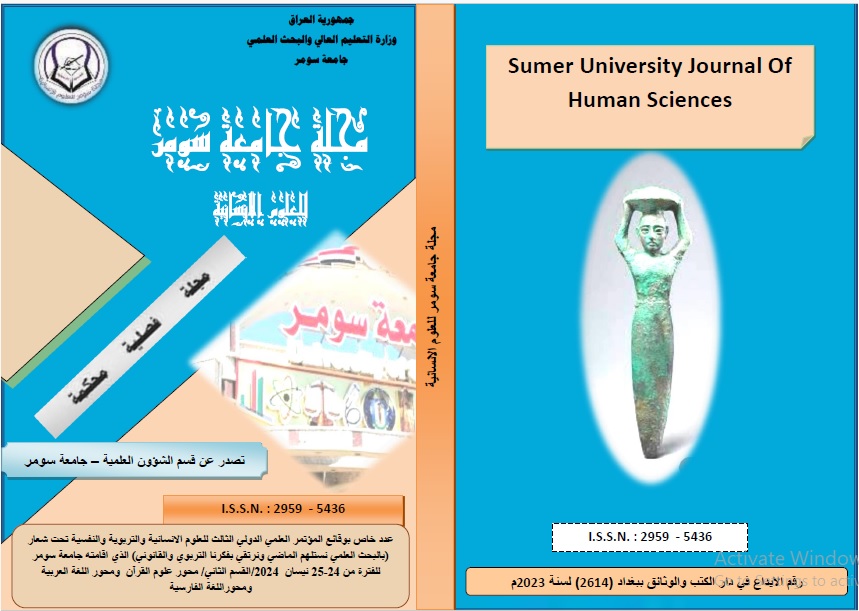Status and intertextuality in the letters of Imam Ali bin Abi Talib - peace be upon him -
Abstract
The external context (maqāmiya) and intertextuality represent the communicative aspect of texts. Textual coherence is not only achieved by structural relationships within the text, but rather by functions. Pragmatics and communication, therefore it has become necessary for the text analyst to take into account aspects other than the linguistic aspect in his analysis, and extend beyond that to what is outside the text,Therefore, the text analyst treats his material as a blog ((text)) of a dynamic process in which language is used as a communicative tool in a specific context by the speaker or writer with the aim of expressing meanings as well as achieving the objectives of the discourse) ().The discourse analyst also pays attention to examining the relationship between the speaker and the addressee through the
implicit meaning of the speech. What the speaker means or what the speaker suggests may exceed the apparent meaning of his words, and the text may contain conflicting implicit meanings, and perhaps we We note that in investigating the implied meaning, we must be aware of some facts about the world (knowledge of the world)(). Since the discourse analyst - like the addressee - does not have a direct method or image to reach the meaning intended by the speaker, he sometimes relies on the process of (inference).
Which enables him to reach an understanding of the speaker’s meaning or understand the nature of the connections between them, so that if a later piece of information comes to the reader that is ambiguous, he will come to another conclusion that will lead him to the intended meaning.


